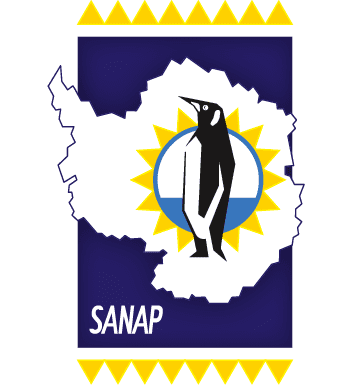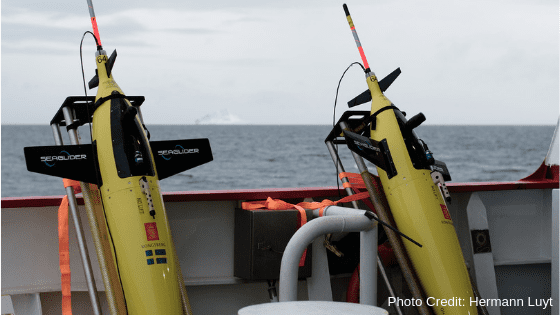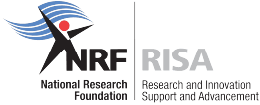The S.A. Agulhas II is now on its homeward journey having finished all logistical and scientific work at SANAE and in the Weddell Sea (track the ship here). The work is not yet over for all aboard, however. Scientists from the University of Cape Town (UCT), the Council of Scientific and Industrial Research (CSIR) and the South African Weather Service (SAWS) continue to collect oceanographic and meteorological data. UCT and CSIR are both sampling seawater as the ship sails, measuring chlorophyll, nutrients, ammonium and phytoplankton community composition, to name a few.
Over and above this, CSIR—more particularly, CSIR SOCCO—and Martin Mohrmann of the University of Gothenburg and ROAM-MIZ deployed oceanographic instruments on the voyage south to Antarctica (see photos below). CSIR SOCCO, or the Southern Ocean Carbon & Climate Observatory, is a South African research programme focused on the Southern Ocean. ROAM-MIZ, according to their website, “is a multi-institutional initiative to observe the full seasonal cycle of the upper ocean in the marginal ice zone near the Greenwich Meridian”. CSIR SOCCO deployed two wave gliders, a Seaglider and a Slocum glider. ROAM-MIZ deployed two Seagliders and a Sailbuoy, christened SB Kringla. These instruments continuously record oceanographic data while they move through the water. The wave gliders and the Sailbuoy remain at the surface, harnessing wave and wind power, respectively, to propel them through the water. The Seagliders and Slocum glider alter their buoyancy to dive and sample sea water during their journeys to the deeps (deep parts of the ocean) and back to the surface. All these vehicles transmit their data to satellites at regular intervals or when they surface after a dive.
Deployment of Gliders
With the S.A. Agulhas II now making for home, the time has come to recover these instruments in order that they can be serviced and used again in future deployments. The wave gliders, in a true feat of engineering, are being piloted home to Cape Town. This is due to reducing sunlight available for the solar panels of the southernmost glider as the receding summer light wanes at these high latitudes. This will entail a journey of 1200 km and 2500 km for the respective wave gliders (click here for the update on the position of the gliders). Two Seagliders, the Slocum glider and the Sailbuoy will be recovered on the voyage home. The third Seaglider is to be recovered by another vessel, the Norwegian RV Kronprins Haakon, sailing from Punta Arenas in Chile.
On the 1st of March, the Sailbuoy and a ROAM-MIZ Seaglider were both safely recovered in fair weather at 60°S 0°E. The speed and success of the recovery were entirely down to the skill of the S.A. Agulhas II’s crew and the prevailing calm weather. Next, the Slocum glider will be recovered at 54°S 0°E and then CSIR SOCCO’s remaining buoyancy glider at 43°S 8°E. The S.A. Agulhas II is now making for 54°S 0°E after having sailed to South Thule and South Georgia for SAWS deployments and commitments.
Retrieval of Gliders
For more information on CSIR’s SOCCO programme, click here and for further information on ROAM-MIZ, click here.
Cover Photo: ROAM-MIZ’s two buoyancy gliders making satellite contact in preparation for deployment.
Written by: Hermann Luyt, Oceanography, University of Cape Town
Edited by: Anché Louw, Antarctic Legacy of South Africa, 07 March 2019
Photo Credit (all): Hermann Luyt






